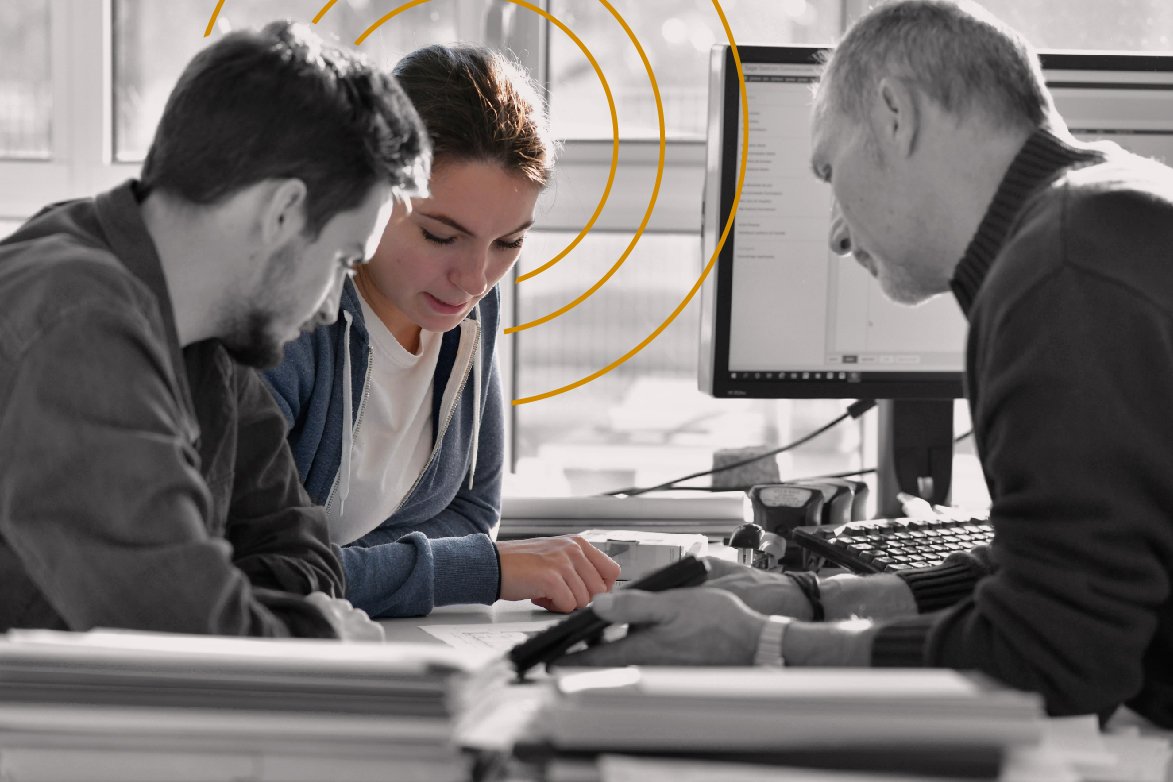The learn-by-doing approach: Fostering innovative culture
How might we transition to a workplace culture that supports meaningful growth and innovation efficiently whilst minimising negative impact to our bottom line?
Most business leaders don’t need us to tell them the ability to innovate and adapt is critical for organisations to grow. Many leaders claim to be innovative, and yet not everyone walks the talk. BCG’s recent report The CEO Innovation Agenda (April 2021) indicated that while 75% of CEOs said innovation was in their top 3 priorities, only 35% could meet the criteria for being ‘committed innovators’.
A key looming obstacle is knowing how to innovate quickly, confidently, and successfully.
There’s a few big things to get right if we want to successfully derisk innovation. One that feels more nebulous when you’re standing in a boardroom (but ultimately critical) is Culture. A company that invests heavily in strategic initiatives and the development of new products but doesn’t have a workforce that can support and thrive from the new scheme, can find themselves faced with disappointing returns or non-starter launches that never ‘took’. While evidence of the value good culture can have on the bottom line is hard to quantify, the difference comes down to which you would rather have:
a) A passive and reactive workforce bound to limiting themselves to doing what they know, and waiting for instructions, or
b) An active army of champions that is curious about how things could be done better, and empowered to take initiatives to create value.
To foster desirable, innovation-nurturing culture change, a ‘learn-by-doing’ program creates the chance to move the dial on organisational behaviour without wasting resources. To achieve this, the approach should involve:
Identifying a real organisational challenge to use as a vehicle for learning and shifting mindsets
Using relevant methods and tools to support workers in understanding and solving problems themselves
Establishing idea implementation pathways to ensure delivery of value
Creating a system that rewards successful outcomes and incentivises ongoing use of the learned approaches and way of thinking
Moreover, when done successfully, the impact of these activities can be seen in a ripple that goes beyond just those who participate, as their colleagues benefit from the learning second hand. While working at WAVE I’ve had the chance to support numerous cohorts of our client’s workforce undergo our learn-by-doing program. Here are some key learnings I’ve taken away about what works and what doesn’t when we approach the task of shifting mindsets and culture.
Practice what you preach
We learn more by participating actively in learning than we do when we passively absorb information (even if it doesn’t feel like it). WAVE’s program is deliberately designed to put people out of their comfort zones in a safe way. This is so they can see how the new approaches they learn can bring them methodically through uncertain situations to find clarity. By applying new skills and knowledge to a task in a supportive environment, workers can build strong neural pathways complementing the desired behaviours. This reduces the churn created by giving people instructions which they then never get to see in action.
The right tools for the job
It’s not helpful to run training sessions that stick out like a shag on a rock in the context of a worker’s day, totally unconnected to their workflow and quickly lost in the hubbub of their usual tasks. What’s needed is to give them the tools in the context of something that has meaning for them - like a task they’re accountable for. When people see for themselves how it adds value in terms of their work, that learning sticks with them, and they’ll come back to it in future.
Select some eager innovation enthusiasts
Seeding an innovative workplace culture is behaviour change - which tends to last better when it’s spread through existing close networks slowly (see Damon Centola’s excellent book, How Behavior Spreads: The Science of Complex Contagions). We can set up the conditions to maximise success by selecting talent who:
are curious about learning and will cotton-on quickly to new ideas
are driven in the workplace normally, so they’ll be eager to apply their learnings more widely
are team players - the kind of people who work well with others and in the process will confidently show others what they’ve learned
are comfortable with initial ambiguity - people who are not freaking out if they don’t know what to do or are fearful of making mistakes
With these confident, eager champions in place, we’ve got a better chance that they’ll diffuse their learnings more widely.
Apply, apply… apply
We often explain a learn-by-doing program through the analogy of a gym experience. When you turn up for the first time, you get an instructor who will help you understand what type of exercise might be relevant for you and show you how to use tools appropriate to your activity. Of course, when you do it the first time you don’t know how to use it correctly, but practice will boost your confidence to the point that eventually you won’t need your instructor. Similarly, consider this when practising innovation methods and tools for your everyday job.
Clear the path for your snowball to build momentum
We find that after the participants have exerted themselves learning new things to solve a problem that is meaningful and valuable to the organisation, they’re proud of their achievements and excited to see their work come to life and make a tangible difference. It’s essential to not let that energy and enthusiasm fizzle if you want to maximise the benefits of the program on your workforce. By having a clear roadmap for how their work will be recognised and make a difference to your company, you’re doubling down on the message that their approach created value. The positive vibes this creates widely in the organisation shouldn’t be underestimated. Humans love learning, and we have a deep need to feel like what we are doing is meaningful and appreciated by our community. Meeting these needs for your workers in a way that aligns with and creates value for your organisation is a winning combination that can create strong foundations for future innovation.
Next Steps
We at WAVE understand the critical methods and tools that can help people solve problems more creatively and readily apply them to their jobs. We have developed a structured learn-by-doing program called the Opportunity Accelerator. It has been designed to help organisations identify business opportunities, accelerate solution implementation, build a growth mindset, and drive long-term impact.
If you’re interested in knowing more about how our Opportunity Accelerator - works, feel free to get in touch. You can email me at india@wave.design.
India is a service designer with a track record of delivering contextually informed and rigorously researched human-centred outcomes. She is also known to clients through our Opportunity Accelerator training program. India started her career in communications and brand strategy by asking how you get other people to listen and engage, how you learn to speak their language.
Get in touch
Interested to learn more about how to foster an innovative culture within your organisation? Get in touch with one of our senior designers to discuss how we can help.




